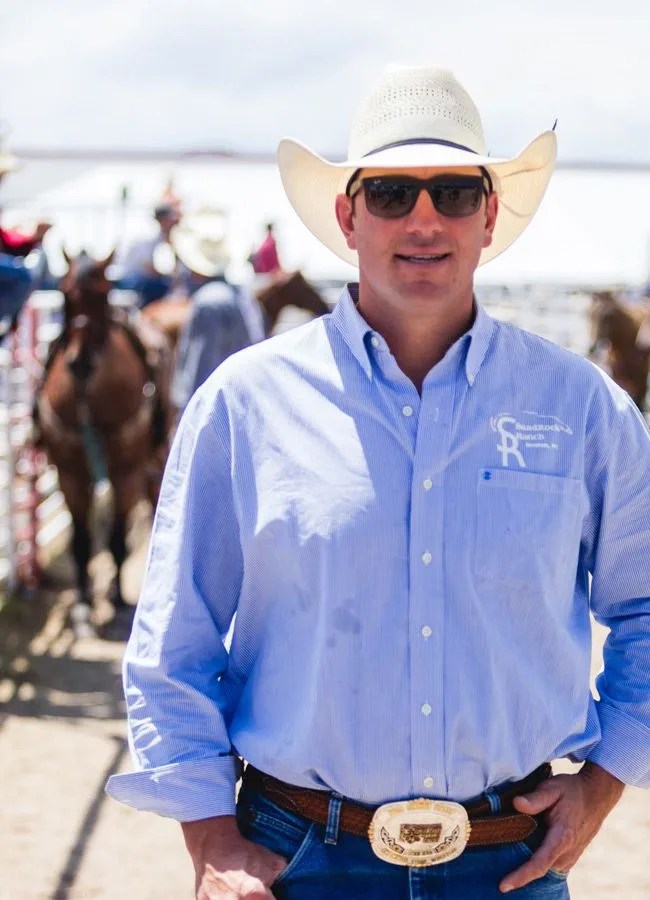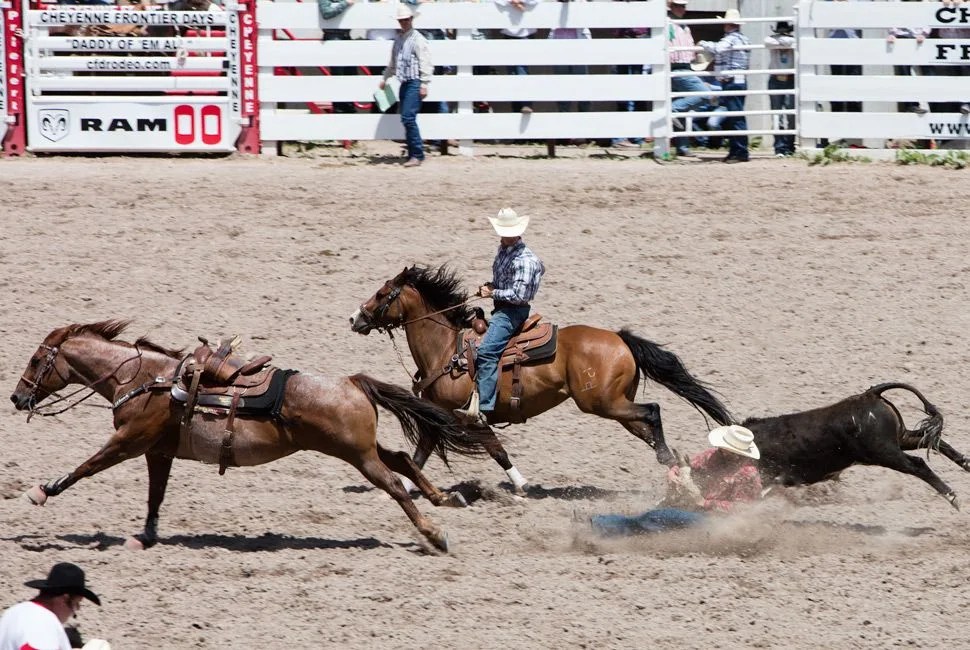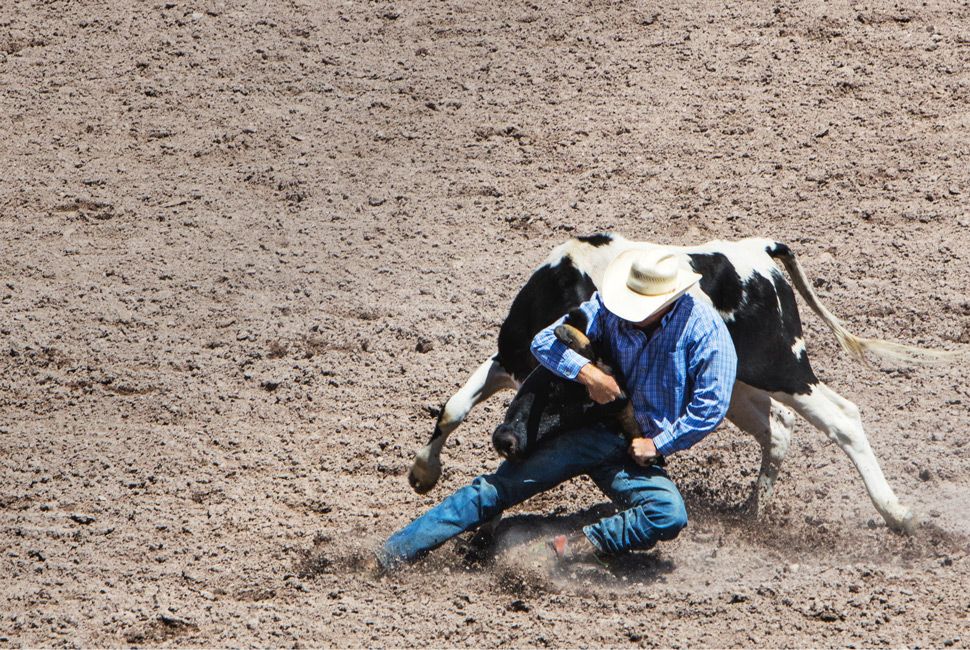Jon Ragatz is a big dude. Like a linebacker, or a defensive tackle. “I weigh 225 to 230 pounds, and yeah, obviously size helps,” he tells me in the dirt paddocks outside the arena of Cheyenne Frontier Days. For a living, Ragatz farms and ranches in Wisconsin. During the rodeo circuit, he travels to about 30 rodeos. There, he rides his horse at full speed adjacent to a 500-to-600-pound steer, leans off the horse, wraps his arms around the steer’s neck, jumps from his horse, swings his legs around and digs his heels in the dirt, then wrenches the steer’s neck sideways and pulls the animal to the ground. He’s a bulldogger, steer wrestler.
Steer wrestling isn’t a normal part of ranch life. When a steer needs to be caught, cowboys rope it with a lariat. But steer wrestling is a large part of cowboy culture, and bulldoggers are respected as some of the toughest (and biggest) guys in a rodeo. Steer wrestling is rumored to have started in the 1930s as an entertainment element, dreamed up by a Wild West Show performer. In modern-day PRCA rodeo, steer wrestling is one of the eight main events, and at Cheyenne Frontier Days, the “Daddy of ‘Em All” the steer are bigger (closer to the 550-to-600-pound mark) and the arena is longer, which means that the event is faster, more dangerous. It’s also entirely engrossing. The four to eight seconds it takes to take down a full-steam-ahead steer are edge-of-seat entertainment, and the variations in result — steer slips away, cowboy falls off steer, cowboy can’t stop steer, cowboy can’t wrestle steer to the ground — are equal parts tragic and hilarious.

Ragatz says he’s never suffered any serious injuries, thank God. He’s soft spoken and humble. He got into steer wrestling because his dad did it. He attends the rodeos with his wife and kids. His son, who shyly hides behind Ragatz’s legs as we talk, may someday fill his father’s big boots. After Ragatz and I talk, he heads over to the arena for his heat. Ragatz will bring the steer to the ground in a few short seconds, and he places first in his heat, so he’ll be coming back for the final the following Sunday (after stopping off in Salinas for qualifying at another rodeo).
While we talked, I asked Ragatz to walk us through how to wrestle a steer to the ground, but let me make one caveat: As with many rodeo activities (not least, bull riding), there’s absolutely no world where I think anyone should attempt to do this. Bulldoggers are incredibly brave men doing a wildly dangerous event. And how they work is entirely fascinating to contemplate and observe, but it’s not safe, it’s not intelligent, and it’s not for the meek of heart. That said, it’s a hell of a lot of fun to watch — and consider trying.
1 First, you wait. Before leaving the box, you have to wait. The steer is released out of the chute first, and a rope is tied to the steer. That rope is linked to another rope that is strung across the front of the box. Once the steer gets out a certain distance — in CFD it’s 30 feet — the rope pulls off the rope across the box, and the horse can leave in hot pursuit. Ragatz emphasized the need for a patient horse, “one that’s real calm in the box and can sit there and watch the steer go out in front of you.”
2 Run fast. “If you don’t have a horse that can’t run very hard, you have a hard time catching them,” Ragatz points out, matter-of-factly. It’s more complicated than it sounds. A horse needs to be like a drag racer, extremely quick off the line and quick to get up to speed. The best times can be under four seconds, and that’s covering a good hundred feet or more. So you need a horse that can run hard. Ragatz, in classic cowboy understatement, says, “The horse we ride, or I ride, he works good.” You also need more than one — the “hazer,” or the cowboy who runs alongside the steer to keep him in a straight line, also needs plenty of giddy-up.

